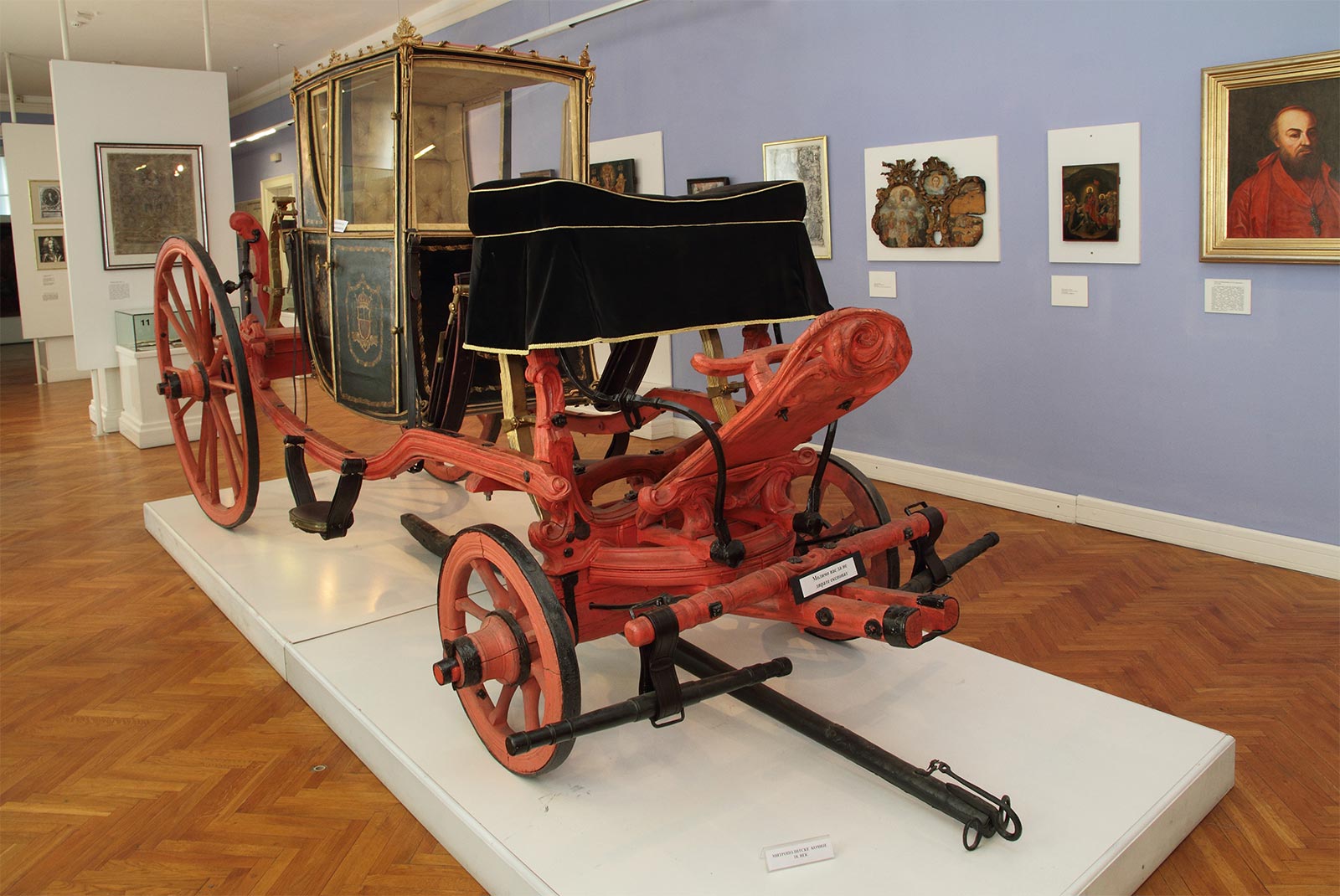Evropska prestonica kulture 2021.
Pripremajući se za ulogu Evropske prestonice kulture, vodeće ustanove Novog Sada osmišljavaju programe kojima će privući i zadiviti publiku, otkrivajući svoja retka blaga, originalne postavke i unikatne predmete. Vodimo vas u Muzej Vojvodine, u kome ćete otkriti nesvakidašnja bogatstva – svetska i lokalna.
U otmenom zdanju nekadašnje sudske palate smestio se Muzej Vojvodine – najveći kompleksni muzej u Srbiji, koji prezentuje razvitak ljudskog društva na ovom podneblju u rasponu od oko osam hiljada godina. Stalna postavka Muzeja pruža panoramsku sliku prošlosti, a izloženi predmeti svedoče o trajanju ljudskih zajednica od paleolita i mezolita do prvih ljudskih tragova kod Iriga starih oko 70.000 godina, preko starčevačke, vinčanske i drugih neolitskih kultura, višeslojne Gomolave, Feudvara i Kalakače, do mitskih vremena stare Grčke i velelepnih spomenika imperijalnog Rima, od seoba naroda do smena etničkih zajednica – slovenskih, ugarskih, srpskih i drugih naroda.
Rimski paradni šlemovi
Najmarkantniji eksponati Muzeja su tri rimska pozlaćena šlema – dva iz Berkasova i jedan iz Jarka, sva tri iz 4. veka. U čitavom svetu postoji samo petnaest takvih primeraka. Šlemovi su izrađeni od kovanog gvožđa preko kojeg je prevučen tanak srebrni pozlaćeni lim. Jedan od dva šlema iz Berkasova dodatno je ukrašen imitacijama dragog kamena smaragda, i poludragog kamenja oniksa i kalcedona, izvedenim u staklenoj pasti. Veliku pažnju privukli su kao deo izložbi u Nemačkoj i Italiji, kada ih je videlo oko 800.000 posetilaca, a bili su osigurani na devet miliona evra.
Zagonetni blizanci iz praistorije
Na stalnoj postavci, koja počinje s postavkom arheologije, možete videti brojne eksponate, među kojima je i neobična dvoglava statueta s lokalitetita Hrtkovci. Predstave figura sa dve glave retkost su u praistorijskoj umetnosti, pa ostaje nedoumica da li je u pitanju realistički prikaz sijamskih blizanaca ili je reč o idolu. Statueta je pronađena u jednoj grobnici sa raznim darovima za zagrobni život. Interesantno je i što u muzejskoj prodavnici možete naći replike najlepših primeraka praistorijskih podunavski figurina poput Crvenokose boginje iz Odžaka, Dupljaskih kolica iz Bele Crkve, Vršačkog idola…
Kočije mitropolita karlovačkog
U istorijskom delu stalne postavke najupadljivije su velike kočije koje pripadaju tipu četvoroprega sa dvoja vrata. Barokne mitropolitske kočije su jedini sačuvani primerak iz 18. veka kod nas, kao i na prostorima bivše Jugoslavije. One plene svojom lepotom – krov i zadnja strana su presvučene crvenom kožom, a unutrašnjost je tapacirana zlatnim brokatom, dok se na sve četiri strane zastakljene kabine nalazi grb Karlovačke mitropolije.
Šetnja trgovačkom kaldrmom
Posebno živopisan segment stalne postavke su izlozi trgovina i zanatskih radionica koje su postojale u periodu od sredine 19. do prvih decenija 20. veka. Sa gradske „kaldrme“ možete direktno zaviriti u izlog fotografskog ateljea Jozefa Singera iz Novog Sada, manufakturnu radionice igračaka Kalmana Home iz Zrenjanina, radnju modiskinje Anke Popov iz Novog Sada, tipične šnajdersko-krojačke radionice iz Zemuna, stolarsku radionicu Milana Đonovića iz Novog Sada, Apoteku iz Odžaka i trgovinu porcelana.
Panonska etno slagalica
Poznato je da je Vojvodina po svom etničkom sastavu izrazito šarolika. Zato svakako preporučujemo obilazak Etnološke postavke koja prikazuje svakodnevni život i nošnju Srba, Mađara, Rumuna, Šokaca, Bunjevaca, Slovaka, Rumuna, Rusina i Nemaca. Po svojoj lepoti naročito se ističu ženske kape, marame i oglavlja koje proističu iz običaja pokrivanja i ukrašavanja ženske kose i glave. Devojke su do udaje išle gologlave, kosu su pokrivale nakon svadbe i otada ih niko više nije smeo videti nepokrivene. U toku svadbe ili nakon prve bračne noći, nevesti se skidao venac sa glave i stavljalo se oglavlje udate žene. Mlada udata žena, uglavnom do rođenja prvog deteta, nosila je pokrivala za glavu, a to su najčešće bile bogato ukrašene kapice ili marame. Posebno su lepa nevestinska oglavlja ukrašena zlatovezom koja se pojavljuju u srpskim, šokačkim, rumunskim i bunjevačkim nošnjama.
















Social Network